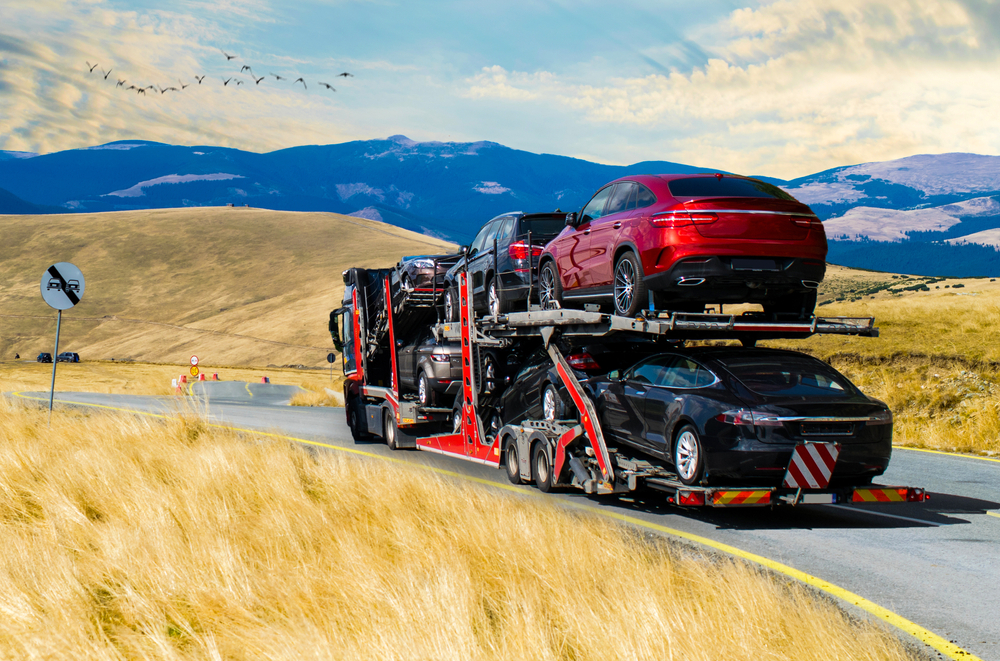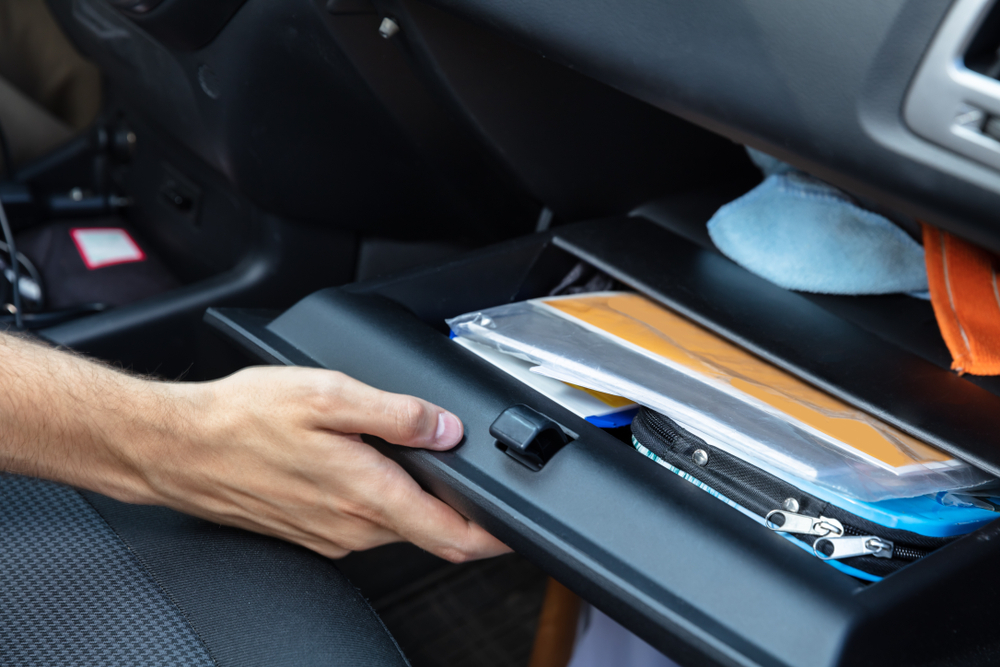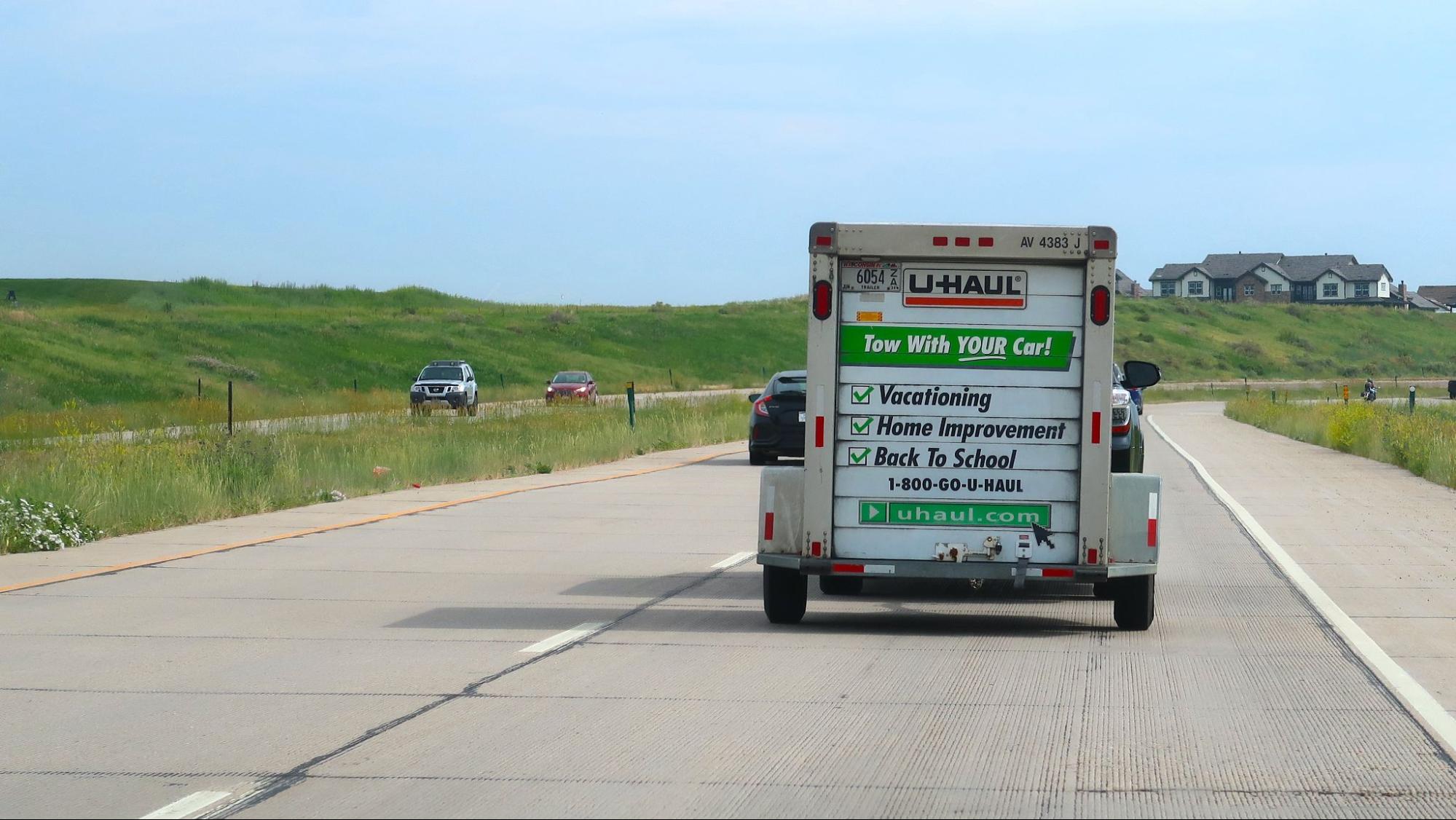
Is Shipping a Car Across the Country Worth It?

So, you’re moving from Los Angeles to New York or you’re headed from the U.S. to Canada. You’re packing your bags and booking movers, all the while wondering what you’ll do with your car. Is shipping a car across the country a good idea, or should you buckle in for a pre-move road trip?
Shipping a car to your destination has its pros and cons, as does driving your car cross country. Before you book a car transport company or decide to DIY (drive it yourself), consider car shipping costs, fuel costs, and the little details to make your next move as hassle-free and convenient as possible.
The pros and cons of shipping a car across the country

Auto shipping makes a lot of sense in many situations, such as when you have a coast-to-coast move or a move that will take you across borders. But there are some risks involved in car transport, especially if you don’t vet the car shipping company first. Always look for a company that runs a background check on its drivers and that requires drivers to have a clean driving record. If you work with an independent driver, ask them for their driving record first.
Let’s break down the pros and cons of car shipping to help you decide whether it’s worth it:
Pro: Car transport minimizes wear and tear on your car
A cross-country trip is going to put a lot of miles on your car. Your car’s miles affect its longevity and its resale value. The more miles your car has, the lower its market value, which means you’ll get less for it when it’s time to sell or trade it in. Driving thousands of miles across the country will also shorten your vehicle’s life, meaning you may have to shell out for a new vehicle sooner.
When you ship a car, it gets a break. Your car will be loaded onto a truck, train, or even boat. It can be in an enclosed transport, meaning it’s protected from rain, sun, and other weather, or an open carrier. Some moving companies can hitch your car to a trailer behind the moving truck as part of their auto shipping services.
Con: Cross-country car transport can be pricey
Auto transport might not be the most cost-effective option for getting your car to your new place. Car shipping costs vary considerably, based on the distance traveled and the type of car. Some car shipping companies charge a per-mile rate, while others base their rates on what their transporting. As a general rule, rates can range from $500 to $1,500.
You can expect to pay less to ship a car that’s on the small side, such as a four-door sedan or hatchback. Car shipping companies typically charge more to transport a cross-country car or minivan. You can also expect to pay a premium if you drive a high-end vehicle or a classic car.
Car transport costs range from a few hundred dollars to a couple of thousand. It’s a good idea to get quotes from several car shipping companies to get a better idea of how much you’ll have to spend. Some companies give you an instant quote online, making the process less time-consuming.
The cost difference between driving and vehicle shipping starts to shrink the longer the trip gets. If you’re moving within a few hundred miles of your current home, it costs about three times as much to ship a car than to drive it. But once your trip crosses the 2,000-mile mark, the difference in price can be a matter of a few hundred dollars. Vehicle shipping can be the better option for long-haul moves.
Pro: Auto transport is safer than driving
While relatively rare, car crashes do happen. The longer you drive, the greater your risk of an accident. A car crash doesn’t even have to be major to put a serious dent in your moving plans.
If you use auto transport services to ship a car to your new home, you reduce the chance of getting into a crash. You can fly or take a bus or train to your destination, confident that your vehicle will get there in one piece.
Con: Car shipping can take longer than driving
You might get to your destination faster if you fly there rather than drive, but that’s not usually the case for your car. It still needs to make the cross-country trek, and that trek is going to be on the road.
That might not be a big deal if you’re moving from one city with great public transit to another and can get by without a vehicle for a week or so. But if you’re moving to a car-dependent suburb or a city, living without your four wheels for a week can be agony.
Pro: Car shipping companies save you time
A cross-country drive takes about a week, depending on the route you take and how long you spend on the road each day. You may have some vacation time saved up and want to use that time to explore the country during your move. Or, you might prefer to spend your vacation relaxing and unwinding instead of cooped up behind the wheel of a car.
If you use a car shipping service, you can get to your new home sooner. And, with a door-to-door service option, you don’t even have to drive to a delivery location to pick up your vehicle when it arrives.
Con: There are scammy car transport companies out there
Scams are a part of modern life, so it’s no surprise that there are scammy auto shipping companies out there. The last thing you want in the midst of moving stress is to pay for car transport that never happens or, even worse, to pay a car transport company, only to never see your vehicle again.
Luckily, you can protect yourself against scams once you know how to spot them. For example, car shipping companies should never ask you to pay upfront—you only pay once your vehicle makes it safe and sound to its new home.
Another sign of an auto shipping company scam is a price that seems too good to be true. Auto transport is pricey, especially if you’re paying for cross-country car shipping. Be wary of any car shipping companies that give you an estimate that’s hundreds of dollars lower than the rest.
The more details you have about the car shipping company, the better. If you work with a broker when booking the service, get the name of the shipping company, plus the details about the driver and whether they have a CDL or non-CDL license. You want a company that works with professional drivers and that can back up any claims it makes.
Recommended Blog Post

Curious about what a car-free life could look like? Check out our blog, “The Pros and Cons of Living Without a Car.”
How to vet an auto transport company

From companies like Auto Driveaway, Montway Auto Transport, SGT Auto Transport, and American Auto Shipping, you have plenty of options when choosing a car shipping company. Your best bet is to get quotes from multiple companies, so you know the general going rate for auto transport and pick the most budget-friendly option.
Along with considering the cost, look for the following when choosing a car shipping company:
- Licensure: In the U.S., companies that haul cargo across states need to have a USDOT number. The number allows the Federal Motor Carrier Safety Administration to keep tabs on the company’s road safety and compliance. You don’t want to work with an auto transport company that doesn’t have a USDOT number.
- Reviews: Online reviews can help you know what to expect from a shipping company. Read reviews to find out whether the company delivered on its promises and lived up to expectations. Pay close attention to comments about pickup times, drop-off locations, and door-to-door service. Take some reviews with a grain of salt, though. Overly positive reviews that are light on details can be fake, and the same goes for overly negative reviews. Look for top-rated companies to add to your shortlist.
- Driver quality: The truck driver who transports your car from point A to B should have a valid license and a good driving record. Ask the company how it hires drivers and make sure you get all the details about your driver before they arrive to pick up your vehicle.
It’s a good idea to ask the driveaway company or other cross-country car shipping company lots of questions when you call for a free quote. Get the details on the company’s drivers, their methods for protecting your vehicle, and the typical timeline for car shipping service based on the distance traveled.
Tips for car shipping

Once you’ve decided to ship a car, you need to prep it for its big journey. Here’s what to do to make sure your vehicle is ready for its car shipping adventure:
- Gather your car’s documents: A legit car shipping hauler needs to verify that you own the car before it hauls it cross-country for you. Be prepared to show your car’s title, proof of insurance coverage, bill of sale, and registration. You’ll also need to show your up-to-date driver’s license.
- Know the difference between a car transport company and an auto shipping broker: A car transport company picks up, hauls, and drops off your car and is responsible for making sure it gets there in one piece. A broker is an intermediary who finds a car shipping company for you and takes a cut of the price. Some brokers are shadier than others, so do your research and make sure you work with a broker who’s legit. Better yet, negotiate with the car transport company directly.
- Choose the right transport option: You have two main options when you ship a car over land: enclosed transport or open-air carrier. The enclosed option costs more but protects your car from rough weather conditions.
- Talk to the driver: Your car might have its quirks, so it’s a good idea to let the driver know about them before they load the vehicle onto the transporter. You can also give the driver a cheat sheet so they know how your car works.
- Think of your schedule: Do you need your car to arrive by a certain date? If so, expect to pay more. Your schedule affects how much it costs to ship a car, so it can pay to be flexible.
- Prep your car: Before you hand the auto over to the shipper, remove personal items from it. The rules vary by transport company, but generally, there should be less than half a tank of gas in the car. Take photos of your auto and record the mileage, so you can tell whether any damage occurs on the way or if someone takes it for an unauthorized joy ride.
- Verify insurance: What if something happens while your car is en route? Always verify that the auto shipper is adequately insured. Just as they ask you for proof of coverage, ask them to show you proof of insurance.
- Review the bill of lading: Before you hand over your car and sign the bill of lading, read it over to ensure all the agreed-upon details are correct. Verify the drop-off location and date and make sure the vehicle condition report is accurate.
- Use car shipping companies if you’re a multi-car household: Shipping multiple cars can be more cost-effective than driving them both cross-country. If you live with someone and you’re both car owners, car transport can be a hassle-free option.
The pros and cons of driving yourself

Maybe a long-distance drive appeals to you or you just can’t justify the average cost of car transport. Taking the DIY route can be the way to go, provided you’ve considered all the positives and negatives first.
Pro: You get to see the country while driving
Depending on the route you take and where you’re headed, choosing to drive on your own can mean you get to explore the country. In other words, it’s the perfect excuse for a road trip!
Looking for some travel inspiration for your cross-country trip? Check out our blog post, “How to Take a Cross-Country Trip Across the U.S.“
Con: Travel costs can add up
Shipping a car is pricey, especially if you choose a door-to-door option. But, using your upcoming move as an excuse for a road trip can also get pricey. You’ll need to pay for hotels or camping sites, food on the road, and fuel. Surprises, such as a flat tire or busted brakes, can also throw your moving budget for a loop.
Pro: You have more flexibility when driving cross-country
If you decide to drive yourself, you have more flexibility over your route and the timing of your trip. If you decide to spend two weeks exploring off-the-beaten-track areas, you can.
Con: Traffic can be a pain
One of the major downsides of road trips is traffic. If you need to drive through busy areas, you can find yourself sitting in lines of traffic for hours, adding time to your trip and making the experience a lot less fun. One way to avoid traffic is to plan your route carefully. Stay out of congested areas during the busiest times of day, or choose routes that usually have a fewer cars on them.
Tips for driving your car during a move

If you’re going to skip car transport and drive yourself, here’s how to ensure smooth travels and a comfortable ride:
- Pack snacks: Bring plenty of water and healthy snacks with you on your trip. While sweet and salty snacks are easy to pack, bring along options that are high in fiber and protein to keep you feeling satisfied and to keep hanger away. Nuts, dried fruit, cheese, and yogurt are all good options, especially if you have a cooler. Stock the car with bottles of water and make a plan for stopping to refresh your supply along the way.
- Bring a buddy: Everything’s better with friends, so recruit a friend or partner to ride along with you. If you’re moving with a significant other, your work is done for you, provided you aren’t each bringing your own cars. Take turns driving and make sure you play plenty of road trip games.
- Get plenty of rest: Give yourself a chance to get a full eight hours of sleep each night. If your budget allows, stay in motels or hotels on the way, rather than sleeping in the car. Go to bed early the night before your trip, so you wake up refreshed and ready for your big adventure.
- Take breaks: A professional truck driver has to take breaks when they transport a shipment long distance. Take a page from the pros and schedule several breaks throughout the day. A good rule of thumb to follow is to take a break every two hours and aim not to drive more than eight hours a day.
- Pay attention to the weather: Bad weather can make driving dangerous, especially if you’re not an experienced driver. Keep an eye on the forecast and minimize driving on days when it’s windy, rainy, snowy, or the visibility is bad.
- Pack a safety kit: Stash a kit with first aid supplies and worst-case scenario gear in your car. Pack a flashlight, reflective vest, and jumper cables.
Moving can be stressful and error-prone, but there are ways to simplify the process and make it stress-free. When you live with Landing, you enjoy fully furnished apartments and flexible leases. When it’s time to move, all you need to do is pack up your personal belongings and go. See how it works for yourself!









